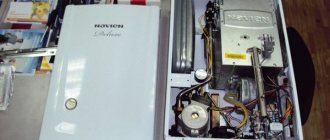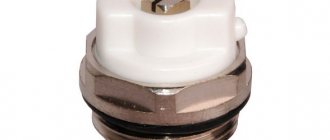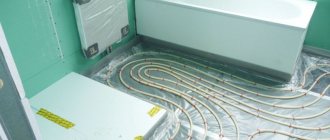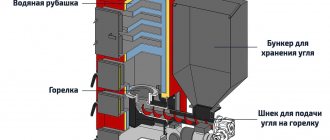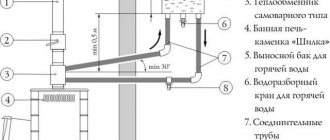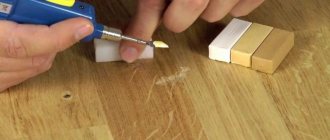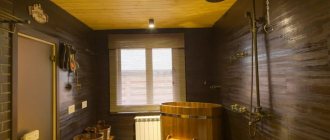The problem often arises among the owners of apartments that are connected to a central heating system. The cause of the breakdown is an air lock that formed during operation and affects the normal operation of the equipment. There are several ways to bleed air from a heated towel rail, each of which involves a specific algorithm of operation.
Typical problems
When using a heating device, it happens that it begins to heat weakly, and after a while it becomes cold. The accumulated air inside it prevents the normal circulation of the liquid in the coolant, which leads to the problem. The solution is to release the airlock.
Some users know how to remove an air lock from a heated towel rail, but for fear of making things worse, they do not risk doing the work themselves. In this case, you should seek help from a specialist.
In apartments that are connected to central heating, air may enter the device when the system is started. Another problem is that with the slow evaporation of hot water, an air lock is formed, which makes it difficult to supply liquid inside the coolant.
If the device remains cold for a long time, fungus will gradually begin to appear in the bathroom. For this reason, eliminating the airlock is so necessary.
Damage from an airy system
You can come to terms with the fact that towels take much longer to dry if the heated towel rail is not warmed up enough, but this device often also serves as a radiator in the bathroom, which is simply not installed.
Such conditions lead to a strong increase in humidity levels, which over time negatively affects the condition of the interior decoration. In addition, damp towels are a breeding ground for bacteria, mold and fungi, which can cause irreparable harm to human health.
Step-by-step instructions for installing KM into the system
At the first stage, preparatory work is carried out. It is advisable to carry out the installation in the warm season, when it is possible to remove coolant from the heating system. Often in old radiators there is no special hole for the CM, so it must be drilled.
- At the first stage, the pipes are removed.
- Remove the radiator from the hooks and completely drain the water.
- On the side opposite from the pipe entrance, a hole is drilled in the top plug, the diameter of which corresponds to the purchased CM.
- The threads are cut inside according to the one used on the KM. It should be taken into account that the tap has a right-hand thread, therefore, the plug has a left-hand thread. Another option is to replace the entire plug at once.
- Then install the tap, as indicated in the instructions for the device.
- The battery is returned to its place.
- At the last stage, the pipeline is connected.
For cast iron batteries, factories produce ready-made plugs for air vent valves
The tap outlet is directed slightly downward. This makes it easier to collect the water that should flow from the tap.
When installing the device on heating pipes made of plastic, a fitting will be required.
Attention! Valves with manual control are usually installed horizontally, automatic valves are installed vertically. The correct installation must be clarified in the instructions.
Video - Equipping a heated towel rail with an air vent tap
Which heated towel rails don't have traffic jams?
According to the current SP and SNiP standards, the heated towel rail must crash into the riser in parallel. In this case, its part between the lower and upper insertion automatically becomes a bypass.
In complex structures with long pipe lengths or their complex geometry (for example, a ladder with shelves), the hydraulic resistance increases sharply. Water does not enter them, preferring the path of least resistance - bypass.
Therefore, this element is narrowed - a piece of the riser is cut out, the PS is connected to it with bends, and the bypass is made from a piece of pipe, the diameter of which is one size smaller than that of the riser.
During Soviet times, a U-shaped heated towel rail in the bathroom was installed directly, without a bypass. It is this option that guarantees the absence of air jams in any direction of flow in the riser.
The problem of airing the PS of the upper floor in houses without hot water supply with hot water pumps during the autumn heat switching on was solved by installing a valve in the attic with a brush under the hose, allowing air to be released along with cold water to start the circulation of the system.
Removing the air lock
The need to bleed air from a heated towel rail arose immediately after the appearance of “ladder” models with several piping schemes. In Soviet times, U-shaped and M-shaped heaters were connected to the heating/DHW system directly, without a bypass; in principle, such problems did not arise.
In the “ladder” modifications, an air lock is formed due to the complex configuration of the tubular structure. Therefore, manufacturers equip their products with one or two manual air vents designed by Mayevsky, hidden inside decorative caps.
With Mayevsky crane
Without the involvement of specialists, a heated towel rail with a Mayevsky tap allows you to ventilate the heating device as needed.
The equipment belongs to the category of air vents, and has a primitive but effective design:
- on one side of the brass body there is a 1/2 or 3/8 inch cylindrical pipe thread;
- Inside there is a through channel for a threaded adjustment screw with a needle-shaped tip;
- the exhaust channel is drilled from the side into the polymer rotary insert.
The screw is unscrewed with a flat screwdriver, air under pressure exits the system into the air channel, the spatial position of which (up/down or sideways) can be adjusted with a rotary insert. As soon as water without air begins to flow into the side channel and the characteristic hissing disappears, the screw is screwed into the working position. The needle closes the hole and the descent stops. More details in the video below:
The main advantage of the needle valve designed by Mayevsky is its small size combined with a cylindrical shape. The device is easily hidden inside decorative glasses screwed onto ladder-shaped heated towel rail racks.
Manufacturers complete the product with a special key or round handle to save the user from even searching for a screwdriver.
In a private cottage with an open heating circuit, there is no need to expel the air; it goes into the expander tank itself. For closed systems, automatic air vents are used.
They are mounted at the top point of the system, and not the heating device, preventing the entire circuit as a whole from being aired.
Typically, float-type diverters are used, as in a flush cistern. Only they work the other way around - in working condition, the float is raised inside the chamber, the hole is blocked, when excess air enters the chamber, the liquid level in it decreases, the float “dives”, opening the drain channel.
Without air vent
If a complex-shaped heated towel rail was initially installed without a Mayevsky tap, removing the air lock from it will be a little more difficult. The general principle of operation is the same - destruction of the tightness of the system to squeeze air into the atmosphere with water pressure. The sequence of actions is as follows:
- the threaded connection is located at the highest point of the system, the riser does not need to be disconnected;
Where to bleed air without a Mayevsky tap. - loosening the coupling, nut, locknut;
- collecting water in a bucket using a rag thrown over the threaded connection, the lower edge of which is lowered into the container;
- tighten the thread after the air hissing stops.
If you remove the plug without a rag, the water-air mixture is sprayed throughout the bathroom uncontrollably, which increases the complexity of subsequent cleaning and can lead to damage to furniture and interior parts.
Attention: When airing a substation with a bottom connection, it is necessary to know the direction of flow in the riser and the insertion height of each pipe. You should unscrew the thread of the pipe coming out of the heated towel rail so that the pressure can push the plug out.
Modern method
This method involves installing a Mayevsky tap on a heated towel rail. Modern models are sold complete with it. Please note that the tap is not responsible for shutting off the water, but serves only as an air vent.
The Mayevsky tap includes a needle valve and an adjusting screw. In order to bleed off the accumulated air, use a flat screwdriver or a special key to turn the screw to open the valve.
The air must be released until hot water flows out of the small hole in a thin stream.
After this, the screw is tightened to the initial position and literally after a few minutes the heated towel rail begins to warm up and then become hot. What to do without a Mayevsky tap if you need to remove air? In this case, you will need the following tools:
- pliers;
- key;
- capacity (at least 10 liters);
- flat screwdriver.
Even without plumbing skills, you can loosen the retaining nut a little and bleed the air. If a gurgling noise appears, do not be alarmed ; this is how the system in which air has previously accumulated is filled with water. If you plan to carry out this operation in an old house, it is better to call an experienced plumber, since the nut may break.
This procedure will have to be carried out several times a year in order for the heated towel rail to function correctly.
What you need to know when choosing a heated towel rail
Shapes of heated towel rails: a - m-shaped; b - U-shaped; c - f-shaped; g - “snake”; d - “ladder”.
Manufacturers of sanitary equipment use mainly two materials in the manufacture of heated towel rails - stainless steel and brass coated with a layer of chrome. At first glance they look exactly the same. All of their differences lie in their different ability to withstand operating pressure differences inherent in the supply of heat and hot water to multi-storey buildings.
Steel products are more durable than those made of chrome-plated brass, therefore, in multi-storey buildings, steel is mainly used, since in heat supply and hot water supply systems pressure drops sometimes reach 8-10 atm.
When choosing a steel heated towel rail, you should choose products made from seamless pipe, the thickness of which must be at least 3 mm. The absence of a welded seam on the pipe guarantees that there will be no leaks that are possible during the operation of a product made from a welded pipe.
Domestic manufacturers practically do not produce brass heated towel rails. The plumbing products market offers imported products, which are mainly used in low-rise, private construction when equipping houses with an autonomous heating system.
Of course, imported brass plumbing has a more varied shape and is more attractive in appearance, but it is designed for much less pressure than sometimes occurs in the pipelines of multi-story buildings. Therefore, they are purchased for installation in cottages, country houses and country houses, where an autonomous system with an operating pressure of about 3 atm is installed.
When choosing a heated towel rail, you must take into account an important feature of its design - the product you like must have a valve through which you can bleed air if necessary. Such a valve is manufactured by domestic manufacturers under the name “Mayevsky tap”. With its help, the problem of first starting up a heated towel rail after its installation or after connecting the system to the water supply after a maintenance break is easily solved.
Design of the “Maevsky crane” and its correct installation
Installation of a heated towel rail to the wall (diagram).
Many people who are not very knowledgeable in technology, hearing the name “Maevsky faucet”, imagine that this is a very complex piece of plumbing equipment, and some do not even know what it is needed for. In fact, there is nothing complicated in its design; the simplest “Maevsky tap” includes only two parts - a body and a conical screw.
At its core, this design is a reliable air outlet. The principle of its operation is as follows: when the tap is open, air from the heating system enters its body through the inlet, and at the same time is removed through the outlet located in its side. When closed, the screw fits tightly to the inside of the housing, preventing liquid from escaping from the pipeline.
“Maevsky tap” is available in different sizes with external thread diameters corresponding to the diameters of pipes used for the manufacture of heating systems. Depending on the design, the devices can be opened either by hand or using a screwdriver or a special key.
When the air lock is removed from the system, a certain amount of water is removed along with the air. Therefore, when installing the tap, care should be taken that the hole in it is located in its lower part. Then it will be possible to collect the liquid in a container, preventing it from getting on the walls of the room. The tap should be installed at the top of the system, this will make it possible to quickly remove accumulated air.
Using the “Maevsky tap” is not difficult. Place a container under the hole in the faucet, turn the faucet quietly and release the air. At first, air will come out with a slight hiss, and then a small stream of water will run. Then the tap is closed by turning in the opposite direction. If the heated towel rail still remains cold, then release the air again and wait until the stream of water flowing from the tap hole becomes hot.
Before you begin installing a bathroom heating device, you should take care of purchasing:
- “Maevsky tap”, if it is not included in the heating device kit;
- ball valve (3 pieces);
- a screwdriver or a special key for the faucet;
- containers for collecting water.
Since the heated towel rail must be installed by a master, he will have everything else necessary for the job.
Signs of a problem
If we talk about the signs of a problem of the nature under consideration, then it should be said that when using such a device, it first begins to heat worse and worse, and after a while it simply becomes cold. The air that has accumulated inside does not allow the liquid to circulate normally in the coolant, which causes the problem. And there is only one way to fix the problem - bleed the air. And here you should take into account that the heated towel rail is not connected to the heating circuit, but to the hot water supply system.
How to bleed air from a heated towel rail: instructions
To return lost power to the device, you must first study the principle of its operation and become familiar with some of its features and nuances. The draining operation does not require professional assistance. Any user can do it independently. There are several ways to eliminate an airlock.
Classic way
This standard method is used to remove an air lock by draining the heated towel rail. However, in order to perform such actions, it is necessary to take into account the location of the dryer. If it is a multi-story building, you need to become familiar with the water shutoff diagram so that you can open the tap. If the water can be drained directly in the apartment, there is no need to shut off the entire system, and it becomes possible to drain the liquid yourself. The whole operation is carried out in several stages:
- First, the nut that connects the dryer and the hot water pipe is unscrewed. To do this job you will need an adjustable wrench.
- To drain, you need to prepare a large container in advance to drain the water.
- Then, after the product has weakened, you must wait for the characteristic hissing sound.
- The final operation will be draining the liquid.
Reference! After the air flow from the heated towel rail stops, the nut can be tightened again.
If the above method does not give a positive result, you can use other methods:
- Sometimes in ancient houses, the solution to a problem is associated with an individual approach to the situation that has arisen. You'll have to contact the tenant on the top floor. The air is vented from his apartment. This is explained very simply. The DHW riser is laid in such a way that its route starts from the bottom floor, gradually going up. Reaching the limiting point, the riser makes a loop and rushes down. This installation causes air to accumulate at the top. That is, it is necessary to carry out the same actions, only from a completely different room.
- The design of modern nine-story buildings provides for the installation of hot water outlets and water supply pipes in the attic. Therefore, you need to open the tap in the attic and drain all the water into the sewer. The negative side of such installation is its inaccessibility. Only plumbers are allowed to enter the attic area. Without them, it is impossible to drain the water.
- If your building has a different layout, you need to seek help from a special service. They will quickly find the necessary water supply and help eliminate the problem.
Method using a Mayevsky crane
This method is considered the most perfect. It is performed in a certain sequence:
- First, prepare a large container into which the water will be drained. It is installed on a flat surface directly under the tap.
- Loosen the screw a little.
- When the hissing stops, water should start pouring out of the pipe. You need to wait until the water flows out without air. Therefore, the bleeding was successful.
- The screw is tightened back.
From all of the above we can draw an unambiguous conclusion. The problem of bleeding air from a heated towel rail can be solved very simply. This operation can be performed without professional help in various ways.
Dissolved air enters the heating system along with the coolant. Accumulating in significant quantities, oxygen creates plugs that prevent normal fluid circulation. This reduces the quality of heating of the building. To eliminate airing of the system, a Mayevsky crane was designed. The principle of operation is simple and clear, so such a device is installed everywhere - be it a multi-storey building or a modest cottage.
The Mayevsky crane helps get rid of air jams in the heating network
Using the Mayevsky crane
The method of unscrewing the nuts and lowering the riser should be used only in extreme cases, when there are no other options. It is not the safest and not the most practical. Modern towel dryers come with a special air vent, also called a Mayevsky tap. It is an ordinary needle valve:
Design and principle of operation of the Mayevsky crane
From the diagram it becomes clear that such a valve opens by turning a screw. The small diameter of the holes will not allow you to fill the entire apartment with hot water, but only drain the required amount until all the air is released. Nothing prevents you from using ordinary water taps to bleed air, however, due to the fact that residents of houses abused the drainage of water from such taps for their own needs, in 1933 Mayevsky invented this tap.
Using the Mayevsky air vent will not cause any difficulties for any person:
- Prepare a container for draining water (at least 10 - 15 liters) and place it under the tap. By the way, the white plastic part can be rotated in any direction, so you can direct the small hole to the desired location.
- Carefully loosen the retaining screw using a screwdriver or a suitable box-end wrench. Usually half to one turn is enough to open the valve and begin to bleed air. Do not unscrew the screw too much, otherwise the water pressure may prevent you from screwing it back in later.
- Wait until the hissing stops. Clean water without air impurities should flow from the hole. The screw can now be screwed back in.
This completes the air bleeding procedure. Agree, this is easier and safer than unscrewing the nuts or bypassing the risers.
Why do you need to bleed your heated towel rail?
The heated towel rail is designed for drying wet laundry. Thanks to this device, the indoor microclimate is maintained. Drying helps soften the environment. As a result, the appearance of a large number of harmful microorganisms on the walls, baseboards and ceilings is prevented:
After using the product for a long time, water circulation may be disrupted. Air mass begins to accumulate inside the unit. A traffic jam occurs that affects the functionality of the device. It stops heating, and its properties and positive qualities are lost. To get rid of the plug, you need to drain the water. The main reasons for performing such an operation are:
- Evaporation of hot water in pipes occurs very slowly. This phenomenon is associated with the formation of air bubbles inside the pipe, preventing the free movement of the heated liquid.
- Another reason may be to restart the water supply if for some reason there is a break in operation.
- The cork appears due to an incorrectly selected product shape.
- Incorrect connection.
In order not to deteriorate the quality of the atmosphere, the air lock must be eliminated.
How often should you bleed the heated towel rail?
Many users are facing this problem. Let's say right away that as soon as there is a problem with the heat supply, the operation must be performed immediately. There is no need to put off bleeding air from the heated towel rail until later, as this process begins to worsen significantly over time. If everything is done on time, after the mass is released, the device design will begin to work at full capacity.
